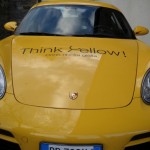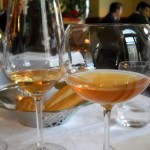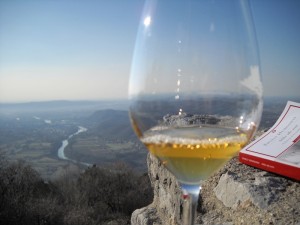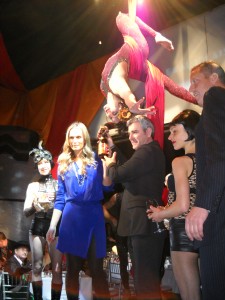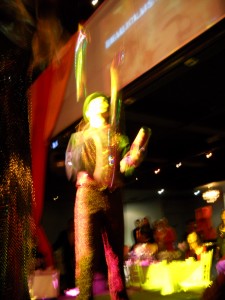We hope you have enjoyed a wonderful holiday season and have started off 2011 with a bang…or perhaps a bottle or two.
The New Year holds much promise and we look forward to continuing to lead winederful lives in the year ahead. In the near future, we will be traveling to New Zealand, visiting both the North and South Islands of this amazing country. Of course, wine will be among our chief pursuits with stops in the Hawkes Bay, Martinborough, Marlborough, and Central Otago wine regions. In March, Tracy will participate as a judge in the Finger Lakes International Wine Competition, while April finds her serving on a panel for Roanoke Winery’s Winemakers’ Smackdown blind tasting event. She is also confirmed to present at both the Society of Wine Educators and American Wine Society’s conferences in August and November, respectively.
And, if learning more about wine is among your New Year’s resolutions, you might wish to plan ahead and sign up to take one of Tracy’s classes at New York University or the International Wine Center (Intermediate Certificate: Thursday evenings beginning March 31).
Among our resolutions, we continue to hold fast to the mantra that “Life is too short to drink bad wine.” We hope you agree. In this regard, we turn your attention to a grape that will not likely be familiar, but one that has great potential to please your palate. And, so we introduce to you…Ribolla Gialla.
Drink wisely and well,
Tracy Ellen Kamens, Ed.D., DWS, CWE
CEO: Chief Education Officer
and
COO: Cork Opening Officer
Think Yellow, Drink Yellow
Among grape varieties, Ribolla Gialla is not a household name, but perhaps it is time to change this oversight. Among the grapes grown in the vineyards of Collio (found in the Friuli-Venezia-Giulia region in northeast Italy), the name Ribolla predominates from the 13th century. Documents from the 16th century note that the Archdecon of Gorizia (located within Collio) sent the patriarch of Aquileia casks of Ribolla annually from 1584-1597. Moreover, classifications of Collio area wines praised the Ribolla wines from Oslavia and San Floriano, among others. But, eventually, Ribolla was supplanted by German and French varieties and was relegated to a wine for commoners. Today, Collio is spawning a Ribolla renaissance, with several prominent producers latching onto this grape variety and taking it to new heights.
Ribolla Gialla, which takes its name from its golden yellow appearance (gialla means yellow in Italian) and distinguishes it from the lesser quality Ribolla Verde, is a grape that can provide diversity and versatility in the winery. It is inherently high in acidity, with delicate, floral aromas, but depending upon the production techniques employed, it is capable of complex flavors, good structure and long aging potential. Current wineries are producing both still and sparkling versions of Ribolla Gialla as well as wines with oak influence and the use of millennia-old maceration techniques. Traditionally done to naturally preserve the wine before the advent of technology, the modern use of skin contact pulls flavors, tannins and other phenolics from the thick-skinned grapes creating fuller-bodied, structured, age-worthy wines.
Collio, nestled between the Adriatic Sea and the striking, Giulian Alps, is blessed with a moderate climate, significant diurnal shifts and good minerality in the soil. Within Collio, Oslavia, which sits on the border of Slovenia and, was previously part of the Hapsburg empire, is considered to be one of its Crus and it is here that most of the Ribolla’s rebirth is centered. Benchmark Ribolla Gialla producers include (but are certainly not limited to): La Castelleda, Fiegl, Gradisc’ciutta, Primosic and Radikon.
Gradis’ciutta Collio Ribolla Gialla 2007, Friuli-Venezia-Giulia, Italy, $17.00*
Run by father and son team, Isidoro and Robert Princic (one of five Princic families in the local wine industry), Gradis’ciutta shifted from selling wine wholesale began bottling its own wine in 1997. Pale lemon in color, this wine had pear, almond and floral aromas. On the palate, it was dry, with high acidity and flavors of almond, citrus and pronounced minerality and paired perfectly with a beautiful dish of clams.
Fiegl Collio Ribolla Gialla 2007, Friuli-Venezia-Giulia, Italy, $18.00*
According to the Austrian land register (and indicative of the confluence of cultures in this area – Italian, Austrian, Yugoslavian), the Fiegl family has been in Oslavia since 1782, but only started bottling their own wines in 1992. With only a short (4 hours) period of skin contact and no oak, this wine was aged for two years, but shows a nice freshness. Medium+ gold in color, there is a slightly oxidative note on the nose, followed by apple, nuts and butterscotch. These continue on the dry palate, joined by minerality.
Primosic Collio Ribolla Gialla Riserva 2007, Friuli-Venezia-Giulia, Italy, $12.00 (non-Riserva)*
Marko Primosic, son of founder Silvestro, presently serves as Chairman of the Associazione Produttori Ribolla di Oslavia and Vice-President of the Collio Consortio. Produced from late-harvested grapes, which were fermented in an open, wood barrel of Slovenian oak, this wine displayed a medium+ gold hue in the glass. Aromas and flavors of floral, mineral and almond persisted throughout its long length.
Radikon Collio Ribolla Gialla 2000, Friuli-Venezia-Giulia, Italy, $45.00*
The vineyards and winery were initially set up in the late 1940s, but it was in 1995 when Stanislaeo Radikon decided to drastically shift his approach to winemaking, incorporating the use of extended maceration for his white wines, among others. Since it was not fined, this wine appeared slightly cloudy. On the nose, it has slightly oxidative notes with nuttiness, bruised apple and spice notes, all of which reappeared on the palate, along with high acidity, astringency and long length.
La Castellada Collio Ribolla Gialla 20006, Friuli-Venezia-Giulia, Italy, $68.00*
Established by Giuseppe Bensa, and run today his sons Giorgio and Nicolo and grandsons Stefano and Matteo, La Castelleda focuses on prolonged skin contact and practices biodynamics. With 15 days of skin contact, this wine possesses high phenolics and was thus served in a Burgundy glass, more akin to a red wine. Deep gold in the glass, this wine provides aromas of sweet spice, butterscotch and apples. It is bone dry, with good acidity and structure and showing some astringency on the palate, with flavors of pith, rich apples, nuts and spices.
*Prices provided are current retail prices for wines available in the U.S. market, which may not necessarily be the same vintage as above.

